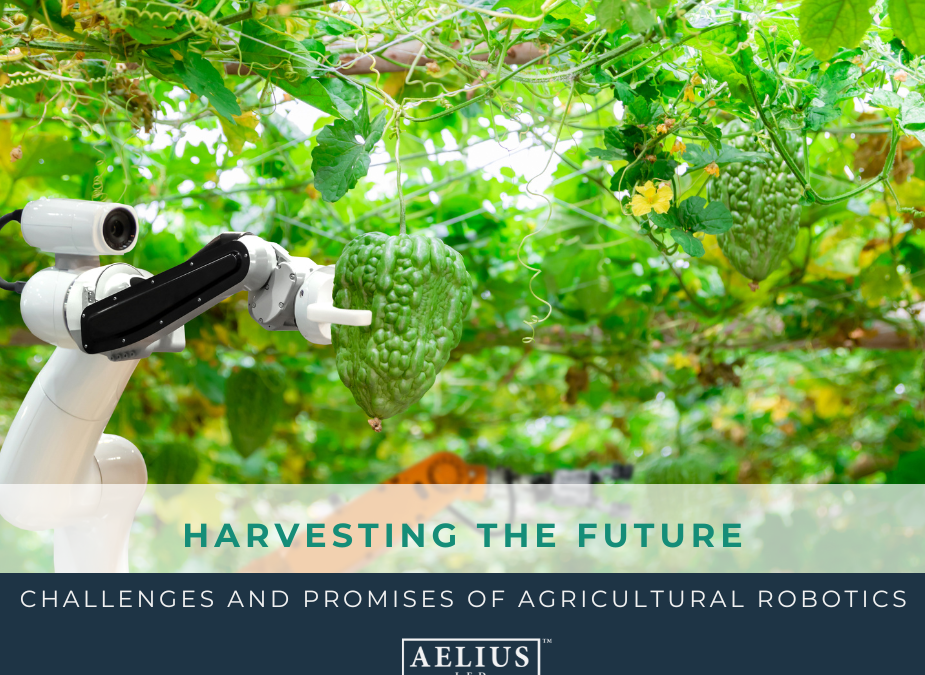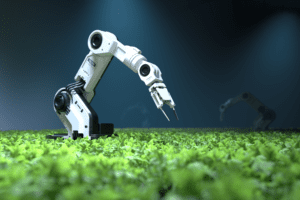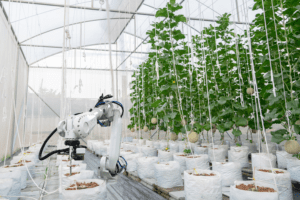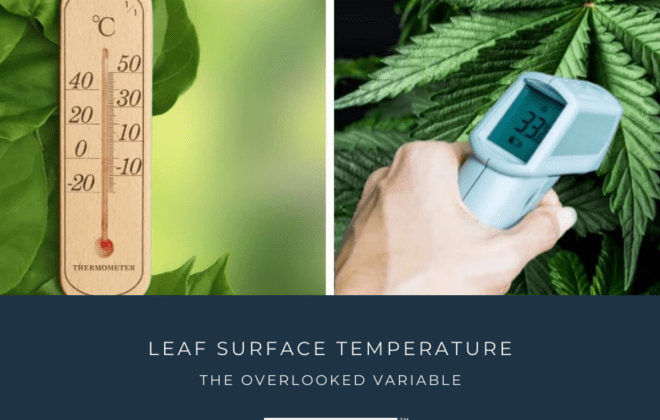
Harvesting the Future: 4 Challenges and Promises of Agricultural Robotics
By 2050, the population is expected to reach nearly 9.7 billion people, which means the demand for food production and robotics will rise significantly. This increase comes when the agricultural sector faces many challenges, including labour shortages and the need for more sustainable practices. For many years, robots were seen in a negative light, feared for their ability to ‘take over the world,’ but now we are utilizing them daily in the workplace. Agricultural robots are being implemented to do more labour-intensive work and improve time efficiency in farms around the globe. They represent a big step forward for the modernization of farming practices.

In Canada, two out of every 5 employers in primary agriculture reported they couldn’t find enough workers to operate at full capacity. While we are experiencing a labour shortage, we are also experiencing a higher demand for food production every year, which is expected to increase 59-98% by 2050. Agribots (robots designed to work in agriculture) could be the solution to both global issues. They are capable of working tirelessly around the clock without any breaks, which will streamline food production by more efficiently maintaining crops with precise harvesting, weeding, pruning, and crop maintenance, as well as performing farm maintenance tasks like crop rotations, cleaning, fertigation, etc.
THE POTENTIAL IMPACT
The impact of agribots extends beyond just efficiency and sustainability. It has the potential to completely change the entire food supply chain, from production to distribution. With the ability to collect and analyze data, the agribots can provide detailed insights that lead to better crop management and decision-making. They represent a new era of ‘smart farming’ where tech and agriculture intersect to create a more food-secure future.
Let’s break down the potential impact of agribots on indoor farming:
Planting and Seeding
It begins as early as the planting and seeding process, executed by advanced automated robots. High-tech machinery can place seeds accurately, making the most of every inch of soil and limiting exposures to bacteria. Their precision boosts crop yield, reduces waste, and provides a foundation for healthy plants.
Watering and Nutrient Delivery
Automated systems are changing the game for watering and nutrient delivery. Providing plants with the exact amount of resources needed with the help of advanced drip or aeroponics irrigation and fertigation systems guarantees plant health while also cutting down on waste, contributing to decreased consumables and utility costs and a thriving indoor farm.
Pest Monitoring
Agribots are equipped with various sensors to detect pests in the early stages, including cameras, infrared imaging, and multispectral sensors. These sensors can identify pests based on their movements, size, shape, and other characteristics. All the data collected is used to identify and locate pest infestations before they spread.
Harvesting

Harvesting robots, like BERRY, are programmed so that once the fruit is ripe and ready to be picked, it is harvested and gently placed for packaging. A concerning limitation when it comes to harvesting with agribots, is the ability to identify and adjust based on different types and shapes of produce. Developing robots that can gently harvest produce like tomatoes and lettuce can be very complex and there isn’t yet a ‘one size fits all’ solution for harvesting. With the rise of AI, we might not be far away from more universal agribots in indoor farming.
Organic Farms created BERRY as the perfect tool to harvest their delicate strawberries without any damage and at the right harvesting time.
Monitoring and Data Collection

Monitoring the environment and plant health allows cultivators to detect issues and deal with them before they become a farm-wide problem. The data collected can be used to improve growing conditions and crop yields. Managing and analyzing massive amounts of data that can be collected in any farm would be impossible without modern technology, and requires dedicated hardware and software, as well as accurately calibrated sensors to maintain system accuracy. Three different aspects can be involved in monitoring and data collection. First, sensor networks are used to monitor environmental parameters. Second, drones can be used for aerial imaging of crop health. Third, autonomous rovers for ground-based data collection. This data can then be put together to get a very detailed picture of crop health and performance throughout the facility.
THE RISE OF AGRIBOTS
When new technology is introduced, it often comes with its own unique challenges. There is a high initial investment to acquire these robots, and the upfront cost can be difficult for small to medium-scale farms to implement. Additionally, to fully utilize this technology, skilled personnel are needed to manage and maintain the advanced systems. Despite these obstacles, the future of agricultural robotics is promising; as this technology becomes more accessible, we will likely see wider adoption across the agriculture industry. As we advance, agricultural robotics will be implemented in many indoor farms to address the alarming challenges in the industry that are present today. While there are areas that need improvement, the advantages that agribots offer in terms of efficiency, cost reduction, and environmental sustainability make them an invaluable, and likely inevitable asset for the future of farming.




